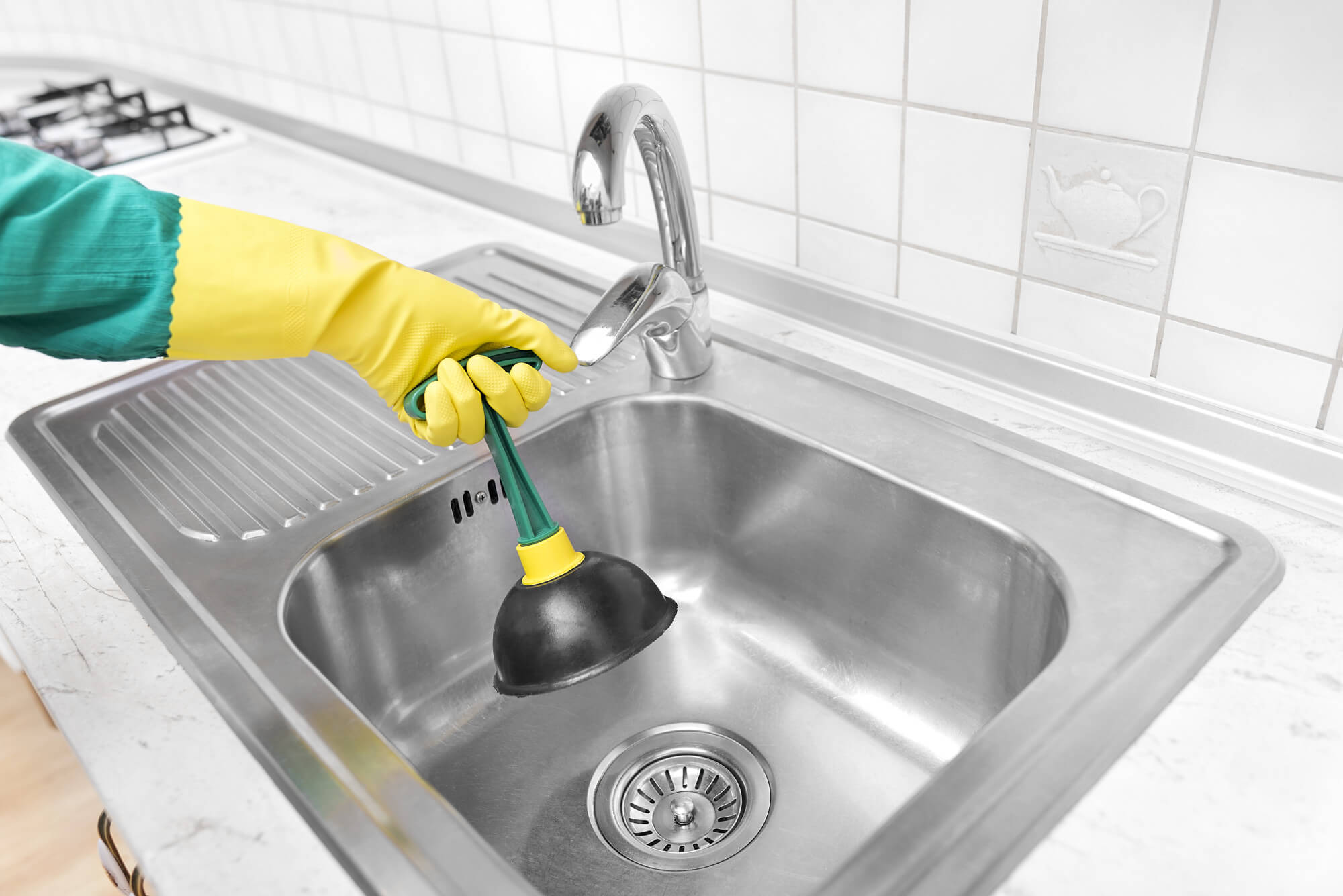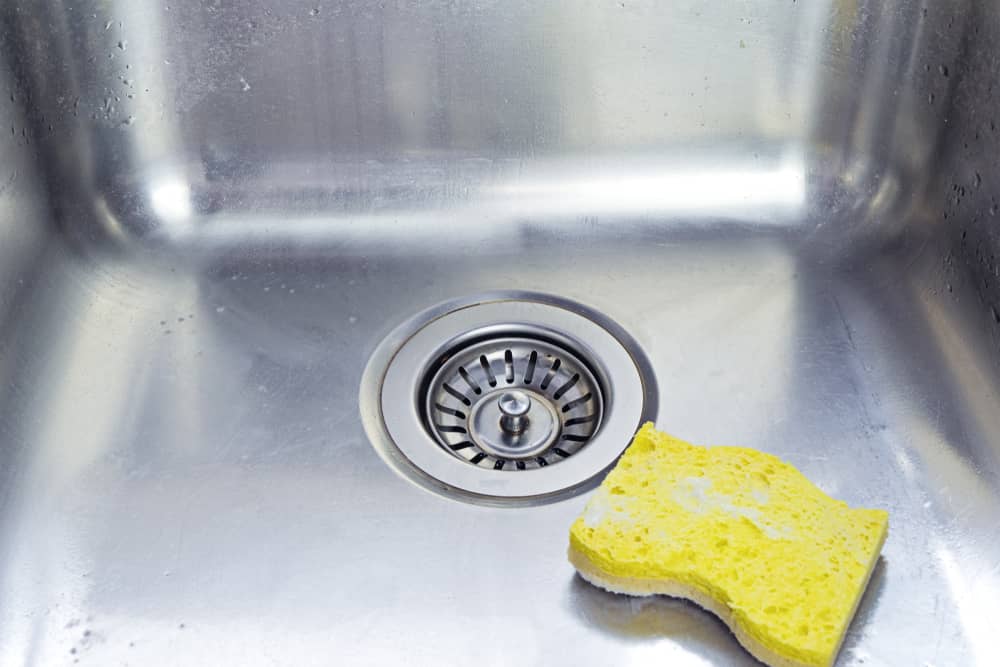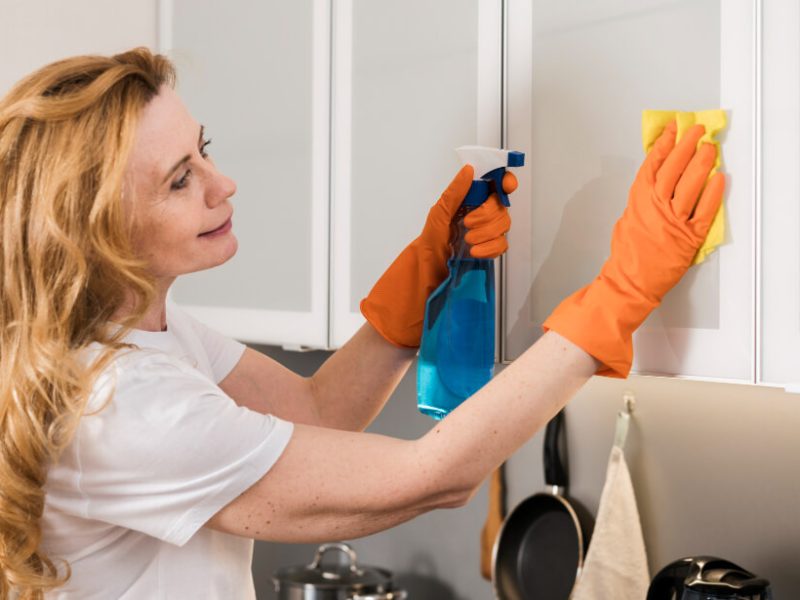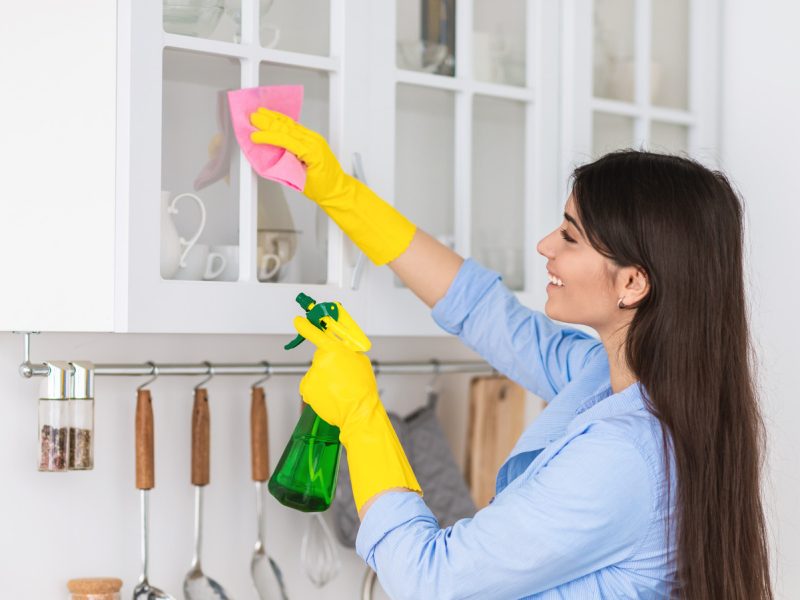Cleaning kitchen drains can be a daunting task for many homeowners. The kitchen drain can become clogged with grease, food particles, soap scum, and other debris. Fortunately, it is not too difficult to unclog and clean the kitchen drain. With the right tools and materials, you can get the job done quickly and efficiently. This guide will explain the steps required to effectively clean a kitchen drain.
Preparing for the Cleaning Process
Cleaning kitchen drains can be a daunting task, but it doesn’t have to be. Taking the right steps to prepare for the cleaning process can help make the job easier and more efficient. To get started, gather the necessary supplies including rubber gloves, safety glasses, a bucket, a plunger, a drain snake, and a drain cleaning solution.
Next, remove any items that are blocking the drain such as food particles or hair. This will make the cleaning process much easier and help reduce the risk of clogs. If the clog is severe or difficult to remove, it may be necessary to use a plunger or drain snake. Additionally, it is important to protect yourself from potential hazards by wearing rubber gloves and safety glasses.
Finally, select a cleaning solution that is safe for your particular type of drain. Many store-bought drain cleaners contain harsh chemicals that can damage pipes or cause skin irritation. Natural solutions such as baking soda and vinegar can be effective in removing clogs and eliminating odors.
Following these steps will help ensure that the cleaning process is efficient and effective. With the right preparation and supplies, you can easily and safely clean your kitchen drains.
Identifying Clogs in Kitchen Drains
Having a clogged kitchen drain can be a huge inconvenience. It’s important to learn how to identify clogs in your kitchen drain so that you can clean them out before they become a bigger problem. There are several ways to identify a clog in your kitchen drain.
First, check the water level in your sink. If the water level is lower than usual, then it’s a sign that there is a clog somewhere in your kitchen drain. Another sign of a clog is if the water pressure in your kitchen sink is weaker than normal. That could be a sign that the clog is blocking the water from flowing freely.
If you can access your kitchen drain, take a look inside. If you see any debris, such as food, hair, or soap scum, then it’s likely a sign of a clog. If you can’t access your kitchen drain, then you can try using a plumbing snake or a plunger to try and free up the clog.
Finally, if you can’t identify the clog yourself, then it’s time to call in a professional plumber. They will be able to identify the location of the clog and use special tools to remove it quickly and effectively. Knowing how to identify clogs in your kitchen drain can help you prevent bigger problems and keep your kitchen running smoothly.
Removing Hair and Debris
Clogged kitchen drains can be a real headache to clear. Hair and debris can quickly build up in your kitchen sink and cause a serious blockage. Fortunately, there are a few simple strategies you can employ to tackle the problem and keep your kitchen drain clean and flowing freely.
To start, you’ll need some basic supplies such as a plunger, a hand auger, and some chemical drain cleaner. If you don’t have these items, you can usually find them at most hardware stores.
Using the plunger is the simplest way to remove hair and debris from the drain. Start by filling the sink with some hot water and then fit the plunger over the drain. Pump the plunger up and down several times to create a vacuum and then pull off the plunger. This should break up the blockage and allow the clog to be sucked away.
If the plunger does not work, you can try a hand auger. Insert the auger into the drain and twist it to try and break up the blockage. If the auger does not work, then it is time to use some chemical drain cleaner.
Chemical drain cleaners are designed to dissolve hair and other debris. To use them, simply follow the manufacturer’s instructions. Be sure to wear protective gloves and safety glasses when using these chemicals as they can be very dangerous.
By using the right tools and techniques, you can easily clear a clogged kitchen drain. The key is to be patient and take your time. This will help you avoid any costly mistakes and ensure that your kitchen drain remains clean and clear.
Choosing the Right Cleaning Solution
Cleaning kitchen drains can be a tedious task, but it is necessary to ensure that your drains remain free from clogs and debris. The right cleaning solution can make all the difference in your cleaning routine, as some solutions can be more effective than others. There are a few things to consider when choosing a cleaning solution, such as the type of material the drain is made of, the type of clog, and the severity of the clog.
For metal kitchen drains, it is best to use a mild non-abrasive cleaner that won’t corrode the metal. If the clog is caused by grease or food particles, then a degreaser or an enzymatic cleaner may be more effective. For plastic kitchen drains, an all-purpose cleaner is often sufficient to break down the clog. If the clog is more stubborn, a stronger solution may be needed.
It is also important to consider the environmental impact of the cleaning solution. Many store-bought cleaners contain harsh chemicals that can be harmful to the environment. For a more eco-friendly option, you can make your all-natural cleaning solution with common household items. Baking soda, white vinegar, and lemon juice are all effective cleaners for kitchen drains.
No matter what cleaning solution you choose, it is important to be sure to use it safely. Always read the instructions on the cleaning solution and wear protective gear, such as gloves and a face mask, when dealing with chemical-based cleaners. With the right cleaning solution and some elbow grease, you can effectively and safely clean your kitchen drains.

Unclogging Kitchen Drains
When it comes to unclogging kitchen drains, can be a tricky task. Thankfully, there are a few simple ways to tackle the problem and help prevent future clogs. The first step is to identify the source of the clog. It could be caused by a buildup of grease, debris, hair, or other objects. Once the source is determined, it’s time to start taking action.
One of the most effective ways to clear a clog is to use a plunger. Start by filling the sink with enough water to cover the plunger’s cup. Place the plunger over the clog and pump it up and down several times. If the clog is stubborn, it may require a few rounds of plunging. If the plunger isn’t successful, you can try using a drain snake. Insert the snake into the drain and slowly move it through the pipe until it reaches the clog. Once the clog has been dislodged, remove the snake and run some hot water to ensure everything is clear.
Another option is to use a chemical drain cleaner. These products contain powerful chemicals that can dissolve the clog, but be sure to use caution when handling them. If the clog is too large or stubborn for the above methods, you may need to enlist the help of a professional plumber.
Taking preventive measures is also important. To prevent clogs, avoid pouring grease and fat down the drain, and use strainers to catch hair and debris. This will help keep your drains clear and your kitchen running smoothly.
Maintaining Kitchen Drains
Keeping kitchen drains clean is essential to avoid clogs and unpleasant odors. Unfortunately, kitchen drains can become clogged with food, grease, and other debris. Therefore, it is important to routinely clean kitchen drains to ensure they are functioning properly.
There are several steps to take to clean kitchen drains. First, remove any visible debris from the drain. Use a plunger to dislodge any food or grease that may be stuck in the pipes. If that doesn’t work, try using a snake or auger to break up any clogs. If that still doesn’t work, use a chemical-based drain cleaner. Do not use this method too often as it can damage the pipes.
If the clog persists, it is important to call a professional plumber. They will be able to diagnose the problem and provide a solution. Additionally, they can provide tips and advice for preventing future clogs.
To prevent clogs, it is important to regularly inspect the drains. Make sure the pipes are free of food and grease build-up. Additionally, periodically pour a mixture of baking soda and vinegar down the drain, followed by hot water, to help break up any potential clogs.
Understanding Corrosion and Rust
The kitchen sink drain is one of the most important components of a kitchen and it is important to maintain its health and condition. Corrosion and rust can affect the life of your drain, so it’s important to have a basic understanding of these processes. Corrosion is the gradual chemical breakdown of a material due to its exposure to substances such as water, air, and certain acids. Rust is a form of corrosion that occurs when iron is exposed to oxygen and moisture. Rust can cause serious damage to your kitchen drain and pipes, so it is important to identify and act on it quickly. To prevent corrosion and rust, regularly inspect your drain for signs of damage and clean any dirt or debris that may be present. Additionally, use a drain cleaner and vinegar solution to help remove build-up and debris. With regular maintenance and proper cleaning, you can help to ensure your kitchen drain stays healthy and free of corrosion and rust.
Common Causes of Clogs in Kitchen Drains
Kitchen drains are prone to clogging due to their frequent use. Grease, food, and other debris can easily build up, leading to clogged drains and slow drains. Knowing the common causes of clogged drains in the kitchen can help you prevent them and keep your kitchen’s plumbing running smoothly.
The most common cause of clogs in kitchen drains is grease. Grease can easily build up in the pipes, creating a thick, sticky substance that traps and blocks other debris. Over time, this grease can begin to accumulate and create clogs. To prevent this from happening, it’s important to never pour grease down the drain.
Food particles are another common cause of clogs in kitchen drains. Many people don’t realize that even small food particles can cause clogs, but they can. To prevent clogs from food particles, make sure to strain your food before you put it down the drain.
Hair is also a common cause of clogs in kitchen drains. Hair can easily travel down the drain and get lodged in the pipes. To prevent this from happening, make sure to use a drain guard to catch any hair before it can travel down the drain.
Conclusion
Cleaning kitchen drains can be a straightforward process. By regularly cleaning out the drains and using a drain cleaner, you can help keep your kitchen drains running smoothly and efficiently. Additionally, if you ever encounter a clog, you can use a variety of methods to try and clear it and keep your drain running freely. With a little bit of effort, you can keep your kitchen drains running as they should.


